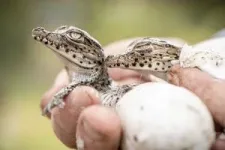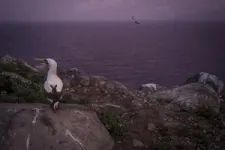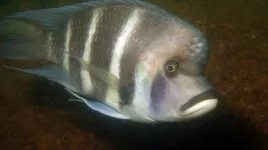The findings of this first-ever comprehensive meta-analysis of the impact of conservation action are crucial as more than 44,000 species are documented as being at risk of extinction, with tremendous consequences for the ecosystems that stabilize the climate and that provide billions of people around the world with clean water, livelihoods, homes, and cultural preservation, among other ecosystem services. Governments recently adopted new global targets to halt and reverse biodiversity loss, making it even more critical to understand whether conservation interventions are working.
“If you look only at the trend of species declines, it would be easy to think that we’re failing to protect biodiversity, but you would not be looking at the full picture,” said Penny Langhammer, lead author of the study and executive vice president of Re:wild. “What we show with this paper is that conservation is, in fact, working to halt and reverse biodiversity loss. It is clear that conservation must be prioritized and receive significant additional resources and political support globally, while we simultaneously address the systemic drivers of biodiversity loss, such as unsustainable consumption and production.”
Although many studies look at individual conservation projects and interventions and their impact compared with no action taken, these papers have never been pulled into a single analysis to see how and whether conservation action is working overall. The co-authors conducted the first-ever meta-analysis of 186 studies, including 665 trials, that looked at the impact of a wide range of conservation interventions globally, and over time, compared to what would have happened without those interventions. The studies covered over a century of conservation action and evaluated actions targeting different levels of biodiversity—species, ecosystems and genetic diversity.
The meta-analysis found that conservation actions—including the establishment and management of protected areas, the eradication and control of invasive species, the sustainable management of ecosystems, habitat loss reduction and restoration—improved the state of biodiversity or slowed its decline in the majority of cases (66%) compared with no action taken at all. And when conservation interventions work, the paper’s co-authors found that they are highly effective.
For example:
Management of invasive and problematic native predators on two of Florida’s barrier islands, Cayo Costa and North Captiva, resulted in an immediate and substantial improvement in nesting success by loggerhead turtles and least terns, especially compared with other barrier islands where no predator management was applied. In the Congo Basin, deforestation was 74% lower in logging concessions under a Forest Management Plan (FMP) compared with concessions without an FMP. Protected areas and Indigenous lands were shown to significantly reduce both deforestation rate and fire density in the Brazilian Amazon. Deforestation was 1.7 to 20 times higher and human-caused fires occurred four to nine times more frequently outside the reserve perimeters compared with inside. Captive breeding and release boosted the natural population of Chinook salmon in the Salmon River basin of central Idaho with minimal negative impacts on the wild population. On average, fish taken into the hatchery produced 4.7 times more adult offspring and 1.3 times more adult second generation offspring than naturally reproducing fish. “Our study shows that when conservation actions work, they really work. In other words, they often lead to outcomes for biodiversity that are not just a little bit better than doing nothing at all, but many times greater,” said Jake Bicknell, co-author of the paper and a conservation scientist at DICE, University of Kent. “For instance, putting measures in place to boost the population size of an endangered species has often seen their numbers increase substantially. This effect has been mirrored across a large proportion of the case studies we looked at.”
Even in the minority of cases where conservation actions did not succeed in recovering or slowing the decline of the species or ecosystems that they were targeting compared with taking no action, conservationists benefited from the knowledge gained and were able to refine their methods. For example, in India the physical removal of invasive algae caused the spread of the algae elsewhere because the process broke the algae into many pieces, enabling their dispersal. Conservationists could now implement a different strategy to remove the algae that is more likely to be successful.
This might also explain why the co-authors found a correlation between more recent conservation interventions and positive outcomes for biodiversity—conservation is likely getting more effective over time. Other potential reasons for this correlation include an increase in funding and more targeted interventions.
In some other cases where the conservation action did not succeed in benefiting the target biodiversity compared with no action at all, other native species benefitted unintentionally instead. For example, seahorse abundance was lower in protected sites because marine protected areas increase the abundance of seahorse predators, including octopus.
“It would be too easy to lose any sense of optimism in the face of ongoing biodiversity declines,” said study co-author and Associate Professor Joseph Bull, from the University of Oxford’s department of biology. “However, our results clearly show that there is room for hope. Conservation interventions seemed to be an improvement on inaction most of the time; and when they were not, the losses were comparatively limited."
More than half of the world’s GDP, almost $44 trillion, is moderately or highly dependent on nature. According to previous studies, a comprehensive global conservation program would require an investment of between US$178 billion and US$524 billion, focused primarily in countries with particularly high levels of biodiversity. To put this in perspective, in 2022, global fossil fuel handouts--which are destructive to nature—were US$7 trillion. This is 13 times the highest amount needed annually to protect and restore the planet. Today more than US$121 billion is invested annually into conservation worldwide, and previous studies have found the cost-benefit ratio of an effective global program for the conservation of the wild is at least 1:100.
“Conservation action works—this is what the science clearly shows us,” said Claude Gascon, co-author and director of strategy and operations at the Global Environment Facility. “It is also evident that to ensure that positive effects last, we need to invest more in nature and continue doing so in a sustained way. This study comes at a critical time where the world has agreed on ambitious and needed global biodiversity targets that will require conservation action at an entirely new scale. Achieving this is not only possible, it is well within our grasp as long as it is appropriately prioritized.”
The paper also argues that there must be more investment specifically in the effective management of protected areas, which remain the cornerstone for many conservation actions. Consistent with other studies, this study finds that protected areas work very well on the whole. And what other studies have shown is that when protected areas are not working, it is typically the result of a lack of effective management and adequate resourcing. Protected areas will be even more effective at reducing biodiversity loss if they are well-resourced and well-managed.
Moving forward, the study’s co-authors call for more and rigorous studies that look at the impact of conservation action versus inaction for a wider range of conservation interventions, such as those that look at the effectiveness of pollution control, climate change adaptation, and the sustainable use of species, and in more countries.
“For more than 75 years, IUCN has advanced the importance of sharing conservation practice globally,” said Grethel Aguilar, IUCN director general. “This paper has analyzed conservation outcomes at a level as rigorous as in applied disciplines like medicine and engineering—showing genuine impact and thus guiding the transformative change needed to safeguard nature at scale around the world. It shows that nature conservation truly works, from the species to the ecosystem levels across all continents. This analysis, led by Re:wild in collaboration with many IUCN Members, Commission experts, and staff, stands to usher in a new era in conservation practice.”
This work was conceived and funded through the International Union for Conservation of Nature (IUCN) by the Global Environment Facility.
More information, including a copy of the paper, can be found online at the Science press package at https://www.eurekalert.org/press/scipak/.
Additional quotes
Thomas Brooks, co-author and chief scientist, IUCN
“This paper is not only extremely important in providing robust evidence of the impact of conservation actions. It is also extremely timely in informing crucial international policy processes, including the establishment of a 20-year vision for IUCN, the development of an IPBES assessment of biodiversity monitoring, and the delivery of the action targets toward the outcome goals of the new Kunming-Montreal Global Biodiversity Framework.”
Stuart Butchart, co-author and chief scientist, BirdLife International
“Recognising that the loss and degradation of nature is having consequences for societies worldwide, governments recently adopted a suite of goals and targets for biodiversity conservation. This new analysis is the best evidence to date that conservation interventions make a difference, slowing the loss of species’ populations and habitats and enabling them to recover. It provides strong support for scaling up investments in nature in order to meet the commitments that countries have signed up to.”
Jamie Carr, co-author and researcher in climate change and biodiversity governance, Leverhulme Centre for Anthropocene Biodiversity, University of York, UK
“This work represents a huge effort on the part of many conservation professionals, all of whom are committed to reversing the loss of the world's biodiversity. It is encouraging to find that the past work of other conservationists has had a positive impact on nature, and I sincerely hope that our findings inspire those working now and in the future to ramp up their efforts."
Piero Genovesi, ISPRA, co-author and chair, IUCN SSC Invasive Species Specialist Group
“Species and ecosystems are facing a dramatic crisis, and the Biodiversity Plan of the United Nations is an urgent global call to action. This paper shows that eradication, control and management of invasive alien species have the largest impact in terms of conservation, and can help reverse the current trends of biodiversity loss, potentially saving hundreds of species from extinction. It is essential that governments and donors support the struggle against invasive alien species if we want to meet the agreed biodiversity targets by 2030.”
Mike Hoffmann, co-author and head of wildlife recovery, Zoological Society of London
“The major advance of this study is its sheer weight of evidence. We can point to specific examples, such as how captive breeding and reintroductions have facilitated the return of scimitar-horned oryx to the wild in Chad, but these can feel a bit exceptional. This study draws on more than 650 published cases to show that conservation wins are not rare. Conservation mostly works—unfortunately, it is also mostly significantly under-resourced.”
Madhu Rao, chair, IUCN World Commission on Protected Areas
“With less than six years remaining to achieve ambitious biodiversity targets by 2030, there is a great sense of urgency for effective conservation action. We can take proven methods to conserve nature, such as protected areas, and scale them up for real conservation impact. This research clearly demonstrates that conservation actions are successful. We just need to take them to scale.”
Jon Paul Rodriguez, chair of the IUCN Species Survival Commission
“Anyone involved in the field of conservation will have witnessed the power of nature to regenerate and grow, given a chance to do so. From fishery exclusion zones, to ecological restoration on land, and animal, fungi and plant recovery efforts, there are numerous examples of halting and reversing biodiversity declines. Langhammer and colleagues synthesize knowledge on the impact of conservation action, and demonstrate that evidence-based conservation efforts indeed work in the majority of cases, not just in a few hand-picked examples. Much more money is spent on destroying nature than on protection and recovery. The authors show that tipping the balance in favor of nature is likely to help us deliver the world's ambitious biodiversity conservation targets.”
Gernot Segelbacher, co-author, professor and co-chair of Conservation Genetic Specialist Group, University Freiburg
“Conservation matters! While we so often hear about species declining or going extinct, this study shows that we can make a difference.”
Stephen Woodley, co-author, ecologist and vice chair for science and biodiversity, IUCN World Commission on Protected Areas
“The world needs hope that conservation action can work to halt and reverse biodiversity loss. This paper demonstrates that a range of conservation actions are highly effective. We just need to do more of them.”
# # #
Photo: Cuban Crocodile hatchlings in the Zapata Swamp breeding sanctuary in August 2019. Conservation breeding and release is one of a number of species-specific conservation actions included in the meta-analysis. (Photo by Robin Moore, Re:wild)
Download images
Re:wild
Re:wild protects and restores the wild. We have a singular and powerful focus: the wild as the most effective solution to the interconnected climate, biodiversity and human wellbeing crises. Founded by a group of renowned conservation scientists together with Leonardo DiCaprio, Re:wild is a force multiplier that brings together Indigenous peoples, local communities, influential leaders, nongovernmental organizations, governments, companies and the public to protect and rewild at the scale and speed we need. Learn more at rewild.org.
University of Oxford
Oxford University has been placed number 1 in the Times Higher Education World University Rankings for the eighth year running, and number 3 in the QS World Rankings 2024. At the heart of this success are the twin-pillars of our ground-breaking research and innovation and our distinctive educational offer. Oxford is world-famous for research and teaching excellence and home to some of the most talented people from across the globe. Our work helps the lives of millions, solving real-world problems through a huge network of partnerships and collaborations. The breadth and interdisciplinary nature of our research alongside our personalised approach to teaching sparks imaginative and inventive insights and solutions.
Durrell Institute of Conservation and Ecology (DICE)
The Durrell Institute of Conservation and Ecology (DICE) is a research centre at the University of Kent. Its teaching and research is designed to break down the barriers between the natural and social sciences and produce real-world impact. Its mission is to conserve biodiversity and the ecological processes that support ecosystems and people, by developing capacity and improving conservation management and policy through high-impact research.
University of Kent
The University of Kent in England is renowned internationally for the quality of its teaching and research, with many of its academic schools and centres being among the best in their disciplines across the arts and humanities, sciences, and social sciences. Its campuses at Canterbury and Medway welcome more than 17,000 students from over 150 countries. The University of Kent is individually and collectively in the pursuit of progress, with a student-focused approach which is supportive, challenging and rewarding, and interdisciplinary research driven by collaboration to create positive impact. We are proud to be a values-driven university and work hard to ensure that our students are at the heart of all we do. We are committed to offering one of the best education and student experiences in the UK, undertaking research and innovation of the highest standard, and being a civic university that serves and contributes to our communities.
International Union for Conservation of Nature (IUCN)
IUCN is a membership Union composed of both government and civil society organisations. It harnesses the experience, resources and reach of its more than 1,400 Member organisations and the input of more than 16,000 experts. IUCN is the global authority on the status of the natural world and the measures needed to safeguard it.
IUCN World Commission on Protected Areas (WCPA)
The World Commission on Protected Areas (WCPA) is the world's premier network of protected and conserved areas expertise. The Commission has over 2500 members spanning 140 countries who provide strategic advice to policymakers and work to strengthen capacity and investment for protected areas establishment and management.
Arizona State University
Arizona State University has developed a new model for the American Research University, creating an institution that is committed to access, excellence and impact. ASU measures itself by those it includes, not by those it excludes. As the prototype for a New American University, ASU pursues research that contributes to the public good, and ASU assumes major responsibility for the economic, social and cultural vitality of the communities that surround it. www.asu.edu
BirdLife International
BirdLife International is the world's largest nature conservation Partnership: a global family of 122 national NGOs covering all continents, landscapes and seascapes. BirdLife is driven by its belief that local people, working for nature in their own places but connected nationally and internationally through the global Partnership, are the key to sustaining all life on this planet. This unique local-to-global approach delivers high impact and long-term conservation for the benefit of nature and people.
Global Environment Facility (GEF)
The Global Environment Facility (GEF) is a multilateral family of funds dedicated to confronting biodiversity loss, climate change, and pollution, and supporting land and ocean health. Its financing enables developing countries to address complex challenges and work towards international environmental goals. The partnership includes 186 member governments as well as civil society, Indigenous Peoples, women, and youth, with a focus on integration and inclusivity. Over the past three decades, the GEF has provided nearly $25 billion in financing and mobilized another $138 billion for thousands of priority projects and programs. The family of funds includes the Global Environment Facility Trust Fund, Global Biodiversity Framework Fund (GBFF), Least Developed Countries Fund (LDCF), Special Climate Change Fund (SCCF), Nagoya Protocol Implementation Fund (NPIF), and Capacity-building Initiative for Transparency Trust Fund (CBIT).
Zoological Society of London (ZSL)
Founded in 1826, ZSL is an international conservation charity, driven by science, working to restore wildlife in the UK and around the world; by protecting critical species, restoring ecosystems, helping people and wildlife live together and inspiring support for nature. Through our leading conservation zoos, London and Whipsnade, we bring people closer to nature and use our expertise to protect wildlife today, while inspiring a lifelong love of animals in the conservationists of tomorrow. Visit www.zsl.org for more information.
END





